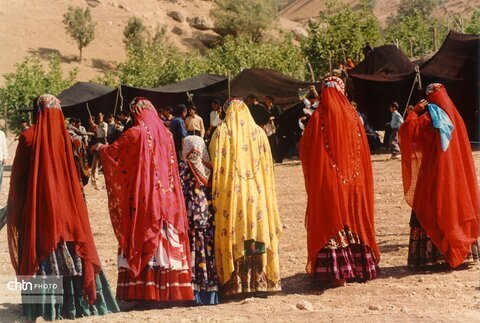Traditional attire of Chaharmahal-Bakhtiari women: a unique expression of Iranian art

TEHRAN — The traditional costumes of Chaharmahal-Bakhtiari women, predominantly from the Bakhtiari and Qashqai tribes, as well as those from the urban and rural areas of Chaharmahal, showcase some of the most beautiful expressions of Iranian art and culture.
These garments are distinguished by their vibrant use of colors such as pink, green, red, orange, purple, blue, yellow, and white.
This unique type of clothing of Lor, Turk, and Fars women in Chaharmahal-Bakhtiari province has been used as formal clothing in various wedding ceremonies, mourning ceremonies, and other formal and informal programs since the Safavid era, and according to many experts and scholars, has always been used as everyday clothing in various formal and informal programs, Miras Arya (CHTN) reported.
Chaharmahal-Bakhtiari women still wear local costumes and clothing, especially in the Bakhtiari and Qashqai nomadic areas, the cities of Shahr-e Kord and Farrokhshahr, and the villages of this province.
Of course, along with Chaharmahal-Bakhtiari women, men in this province also wear local costumes and clothing.
The interest of Chaharmahal-Bakhtiari people, especially women to traditional clothes is so great that in spite of current conditions of sanctions and high prices, the use of this type of local clothing has not decreased among them, but it also continues to enjoy a special and special prosperity.
The local clothes and clothing of Chaharmahal-Bakhtiari women and men, especially among women, have always enjoyed public interest at the national and international levels.
Currently, the market for the production of local clothes and clothing of Chaharmahal-Bakhtiari women is booming and has many fans in other provinces of the country and the world.
The production of local clothes and clothing of Chaharmahal-Bakhtiari women has not experienced a recession today, and there is no decrease in the customers of this art and industry.
The use of local clothes and costumes by Chaharmahal-Bakhtiari women is currently popular and thriving among various age groups of Bakhtiari, Qashqai, and local areas of Chaharmahal, villages, and cities of this province.
Local clothes and costumes are used in these areas with the aim of preserving the identity and authenticity of the people of this region.
Of course, the use of local clothes and costumes by Chaharmahal-Bakhtiari women is increasing in nomadic and rural areas and is becoming more colorful for today's generation.
The local attire of Chaharmahal-Bakhtiari women is majorly used in cities of Lordegan, Khanmirza, Koohrang, Ardal, Farsan, and Borujen.
The boom in the production of local women's and men's clothing in Chaharmahal-Bakhtiari province has been so favorable that even in some cities of the province, large production workshops are currently active in this field.
The price of each piece of local clothing in Chaharmahal-Bakhtiari province is determined in proportion to the variety, fabric size, and quality of the raw materials used in its production.
The increase in the price of gold, as one of the main and most important raw materials, has a direct impact on the production of local women's clothing in the province.
Gold is used in the production of ‘Lachak’ of Bakhtiari clothing and ‘Taj’ of Qashqai clothing for women. The high cost of raw materials and gold has caused reduction in production of ‘Lachak’ of Bakhtiari clothing and ‘Taj’ of Qashqai clothing for women.
The local clothing of Bakhtiari men includes a felt hat, loose trousers, chogha, giveh, shawl and slippers, and the local clothing of Bakhtiari women includes pants, yal (short coat), joveh (shirt), vest, lachak (hat) and meyna (headscarf).
KD
